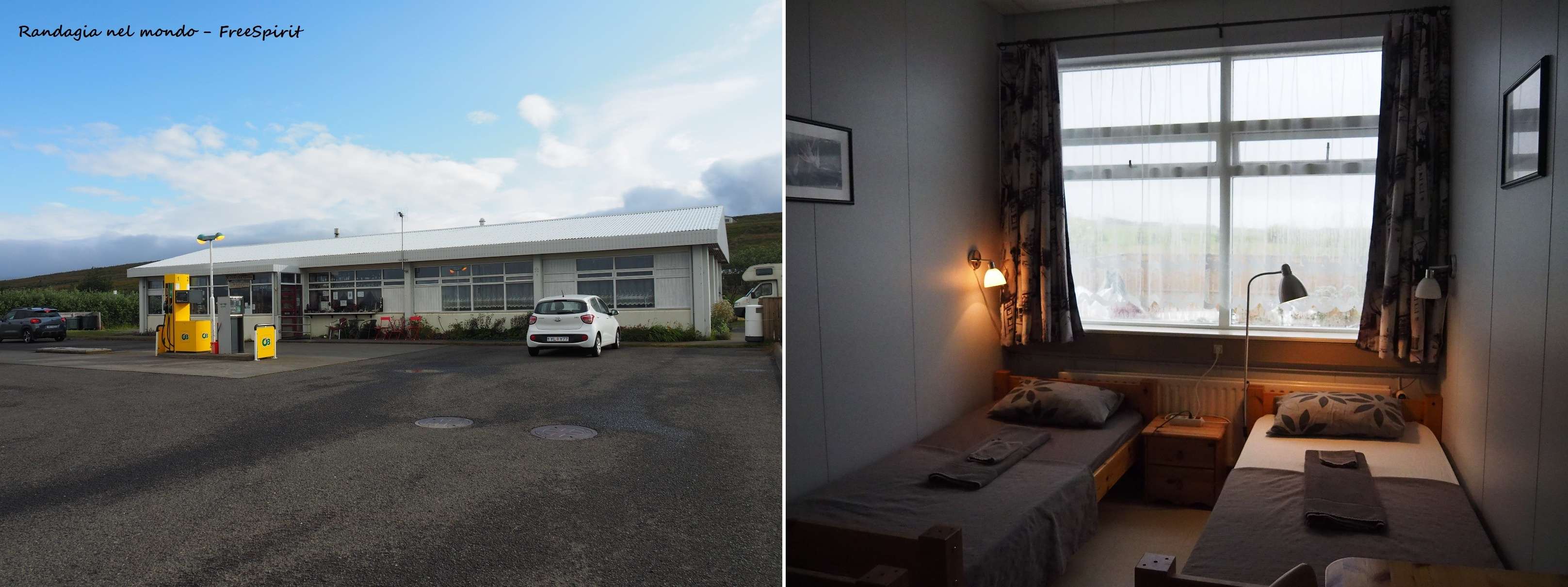The stay in the North of Iceland was marred by bad weather, which did not allow us to complete our plans. We did not get to see whales in Husavik, and we did not travel some scenic coastal roads invaded by fog.
The leg from Egilsstaðir to Asbyrgi is quite demanding. In theory I would have had to cover it passing from Þórshöfn via Raufarhöfn to then arrive at Kopasker along the coast (road 870). However, given the weather conditions, my host of the Midjnaes Accomodation in Vallanes advised me to cut the peninsula, and follow the 85. We get up very early, and leave Egilsstaðir around 8 am. We reach the Grimshus Guesthouse around 2 pm, leaving our luggage in a kind of deposit. The common parts of the guesthouse are not very modern, however the rooms and bathrooms are very nice. My single costs 56 Eu (booked via Booking).

We immediately rushed to the Asbyrgi Canyon. The name means “shelter of the gods”. It has a horseshoe shape, and is said to have formed after a flood of the Jokulsa River. It has an amplitude of about 1.5 km, with an amphitheater of sheer cliffs about 100 meters high. In the basin it is possible to walk among the vegetation by following the marked routes, some of them not very precisely. The funniest thing was climbing to the top of the cliffs (there are at some point some steps and ropes to grab onto). The least funny thing was the rain, especially when I found out that my shoes, in theory waterproof, really weren’t so at all !!

The next day, the first acitivity to be cancelled is the whale watching. At Husavik pier we find that all tours are suspended due to the strong wind and rough sea. We console ourselves by lingering more than necessary at the well-heated whale museum. In the souvenir area I can find the infusions of arctic thyme, and fortunately I decide to buy them. I say fortunately because it will be the only time I find them.

We then reach the lava formations of Dimmuborgir, a lava field which originated 2300 years ago from a spill of magma from the ground, which formed a lake that quickly cooled after coming into contact with the waters of the Mývatn. There are many caves and caverns which originated from intense steam. As in other places, legends tell that these rock formations were the home of elves and other spirits. It seems that these stories were invented to dissuade children from going outside in wintertime, because in case of getting lost due to the dark and the cold weather they could risk to die.
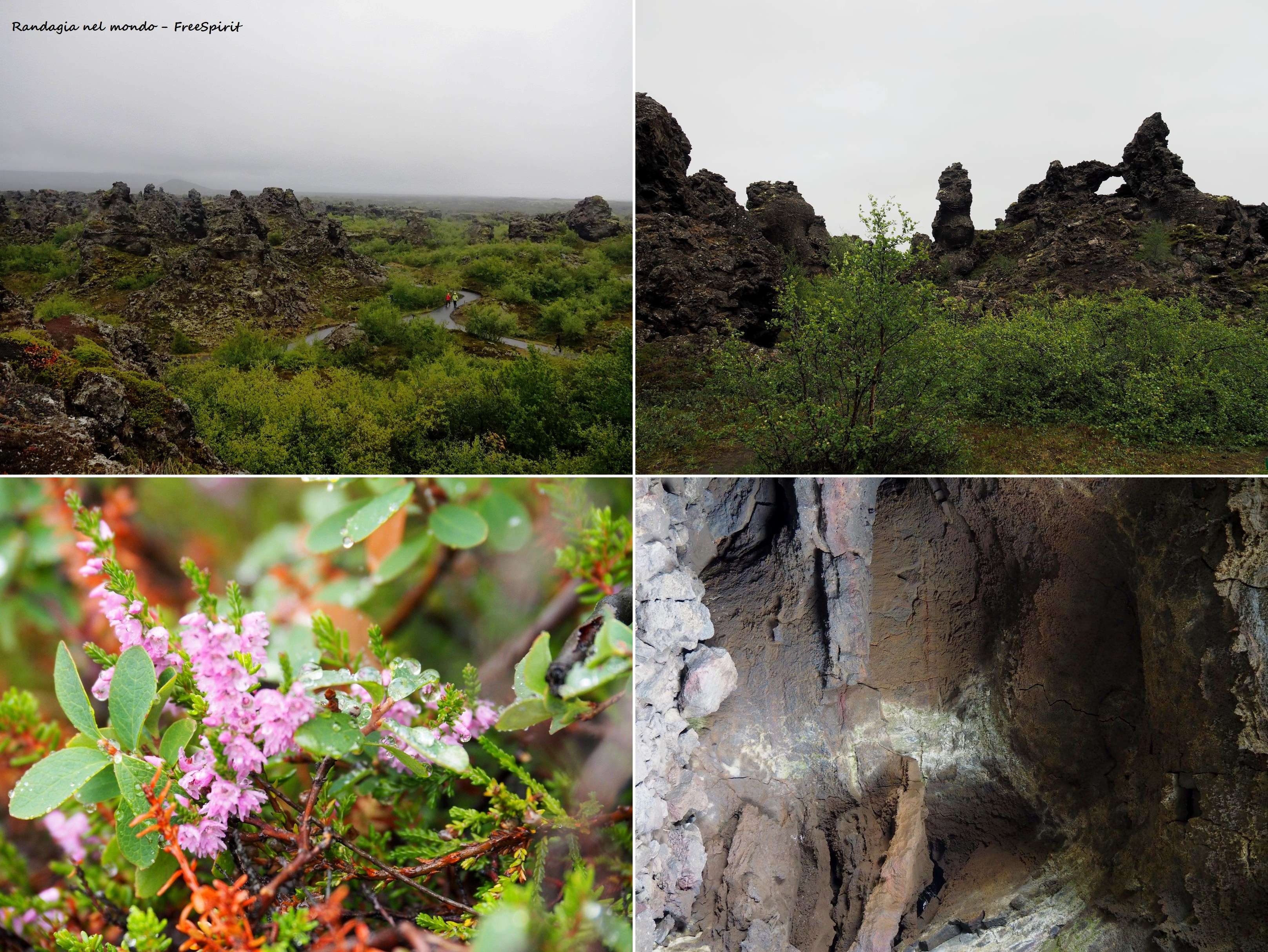
Hverir has an exceptional beauty despite the bad weather. We muddy our shoes in a scandalous way, and obscenely dirty the mats of our car. This is the elves punishment for mocking the organized tours people who get off a bus with their feet wrapped in nylon swimming pool slippers 🙂
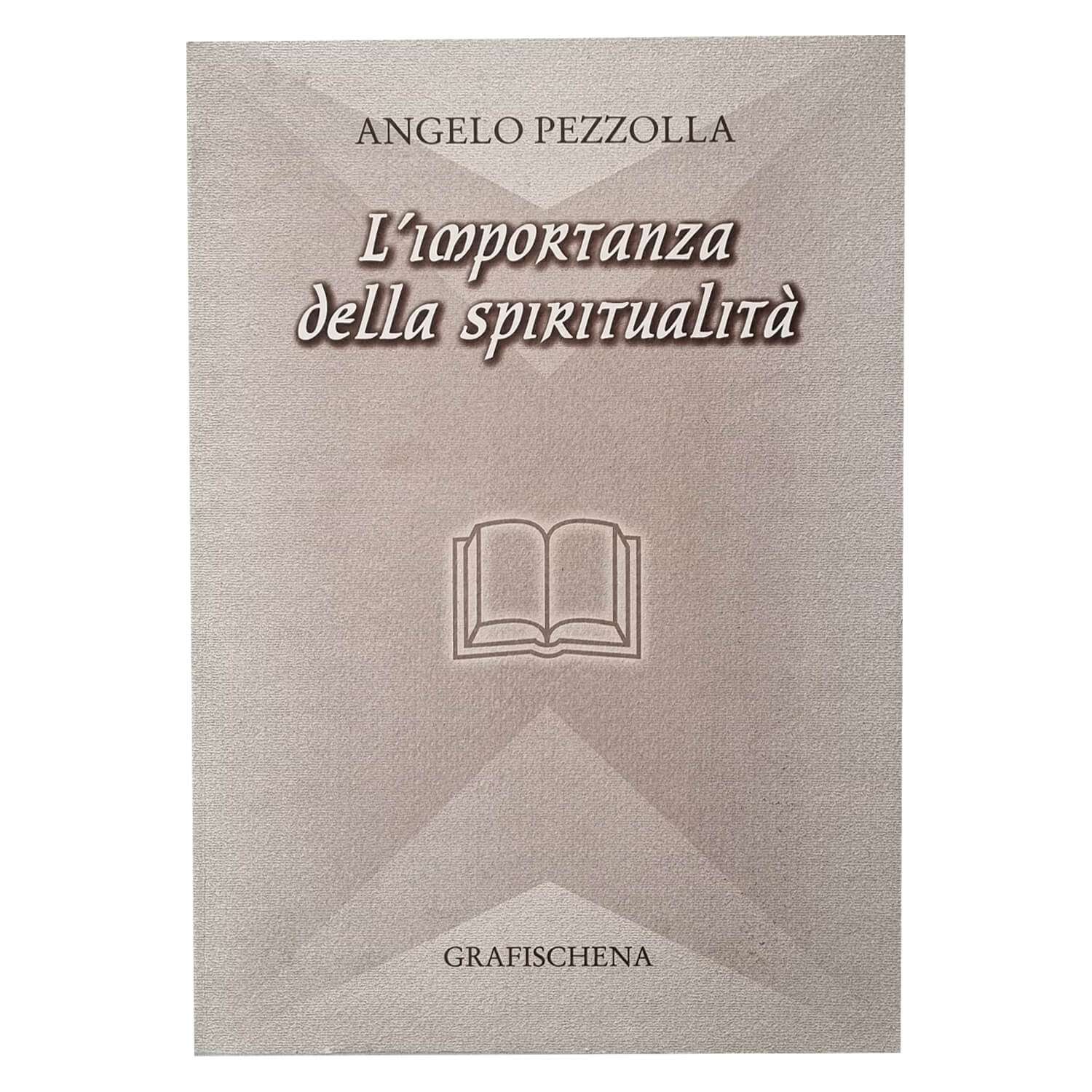
Selfoss, followed by Dettifoss and Hafragilsfoss, generated by the Jökulsà river, are wonderful despite th bad wheater. We get there from the west side, with a paved road (862 + 886). The rain, the wind, the weather adversities do not affect the beauty of these places, which nothing would lose and nothing would gain under a bright sun. The power and strength with which the muddy water flows into the gorge of the Jökulsárgljúfur canyon are absolutely impressive and fearful. The fall was generated by a violent earthquake originating from a volcanic eruption that moved the river bed towards a deep fault in the basaltic plain. The power of the water raises splashes that can be seen 1 km away. The impact power is such as it digs the underlying gorge at the rate of several centimeters per year.

Last stop of the day are the thermal baths of Mývatn. We see them only from the outside. Too cold!
Once we reach Mývatn, it is easy to find the reception of the hostel, (Hlid Hostel) which is well signposted near the campsite. A little less easy is instead to find the exact building where we will sleep. All the accommodations in town, apart from ours, are very expensive. We adapt to the dormitories (40 Eu per person, booked via Booking). To tell the truth, I slept very well anyway, the occupants of the other bunk bed was a very polite Canadian couple. The reviews are discordant, the bathrooms certainly need some renovation, but the view from the dining room is priceless. The kitchen is small, and if groups arrive it is better to organize oneself to prepare meals before they invade the room as locusts and occupy the tables. Not very pleasant, in the beginning, is the strongly sulphurous smell of the water coming out of the taps. However, it is enough to wait a moment, and it tastes completely neutral on the palate. In the area there are many things to see, and I think it is better to stay at least two nights.
The next morning, we bypass Stóragjá, we are not fans of “Game of Thrones”, and we are in a hurry.
Lake Mývatn is located between the Eurasian and European faults, constantly moving away. The area is full of volcanic activities of all kinds.
On the way to Hverir, near the crossroads for the thermal springs, we see a small steaming lake of an unbelievable colour, an almost phosphorescent turquoise, despite the gray day. Signs warn to pay attention and absolutely not to get inside, as temperatures can reach 100°. The smell of sulfur is very strong, it seems to stay in hell !!
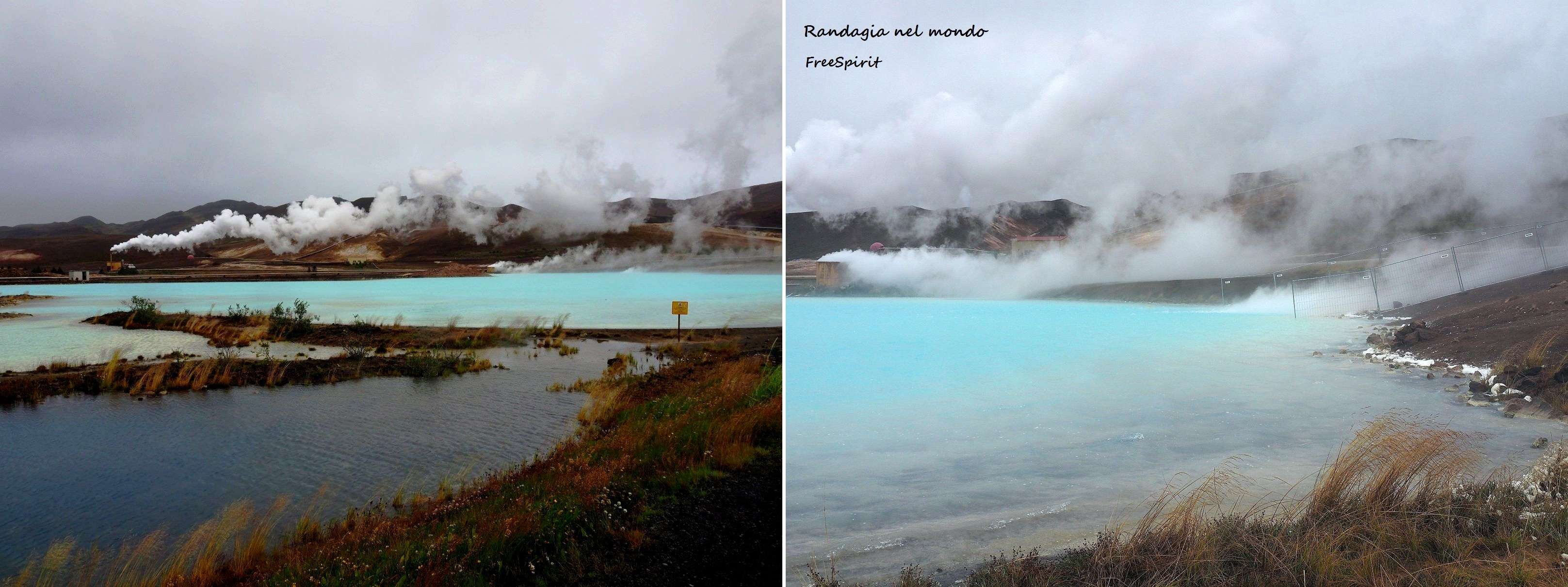
We then go on to the Krafla caldera, which includes one of the two most famous Vìti craters with a lake inside, the other is located in the Askja (“vìti” in Icelandic means “hell”). All paths are closed, and we only have a few minutes stop for some photos at the parking lot.
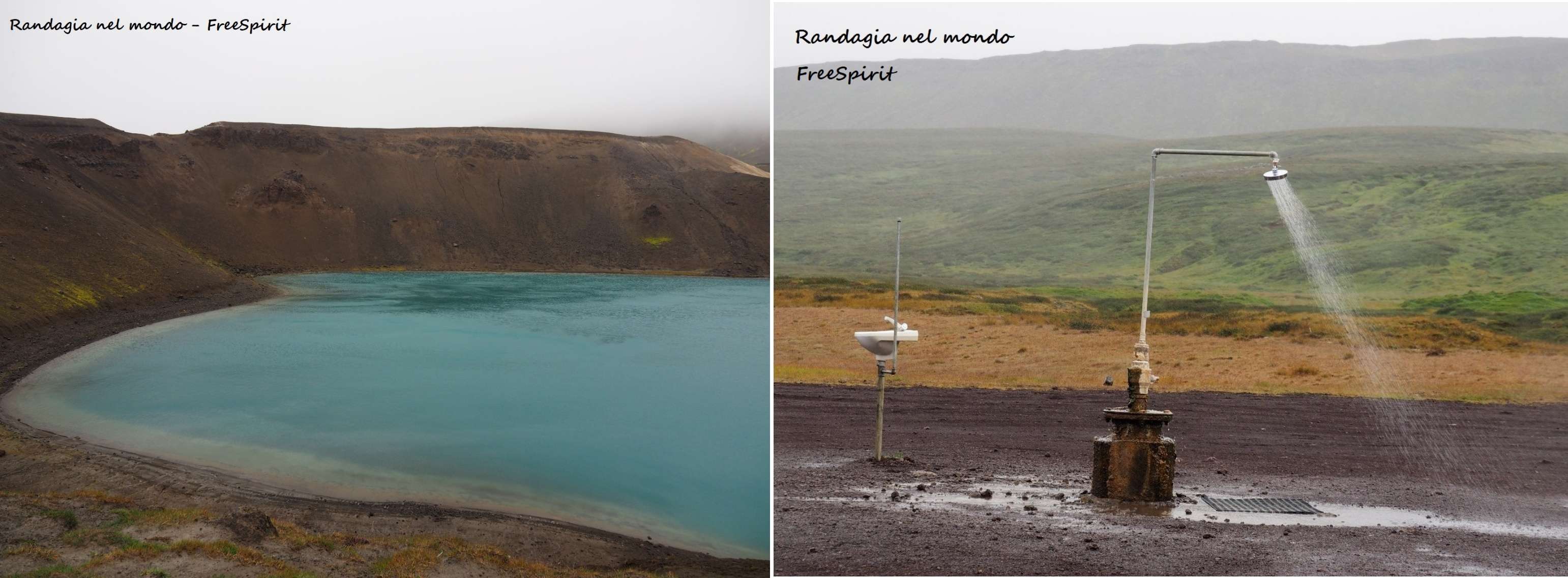
Before leaving the area, we circumnavigate the lake.
The beautiful Goðafoss waterfall is easily accessible from the parking lot, and thanks to a bridge it is possible to admire it from both sides.
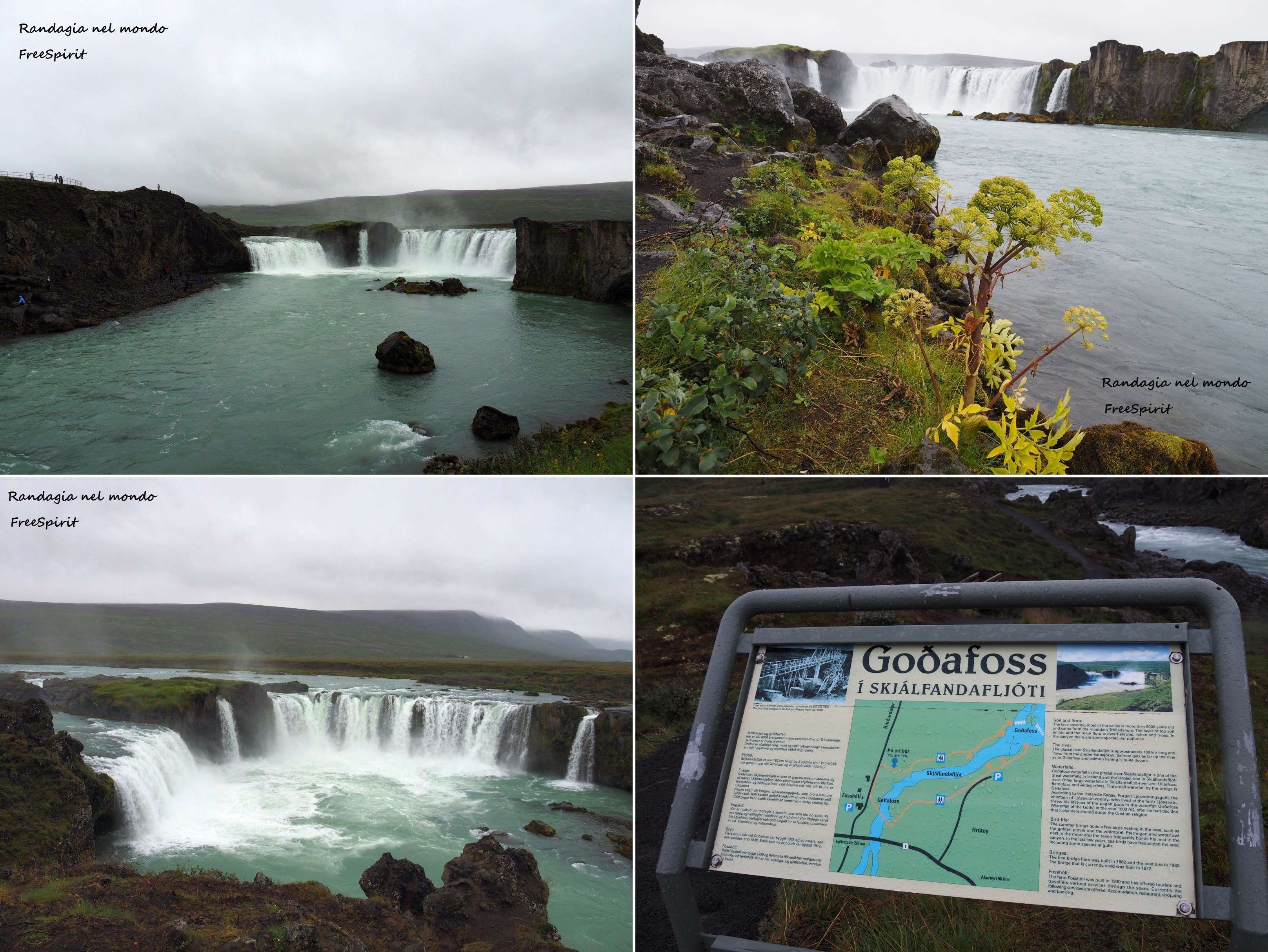
We reach Akureyri very soon, we leave our things at the Lonsà Guesthouse, (63 Eu my single room, booked with Booking) and we head to town.
The city center is full of shops, bars, restaurants, and boasts a decent music scene. Large cruise ships dock in the harbour. Clothing stores are stormed by desperate people, unprepared for adverse weather conditions. A family of Colombians in jeans jackets and Converse leaves at least 1000 EU in goretex boots at the cash checkout. Having cold and wet feet makes you capable of everything, even crazy expenses. I’m in their same situation, but I’m satisfied with 40 Eu rubber boots on sale, and a yellow cod fisherman’s hat. I also point out the presence of an 66North (Icelandic brand) outlet (here too I do some shopping).
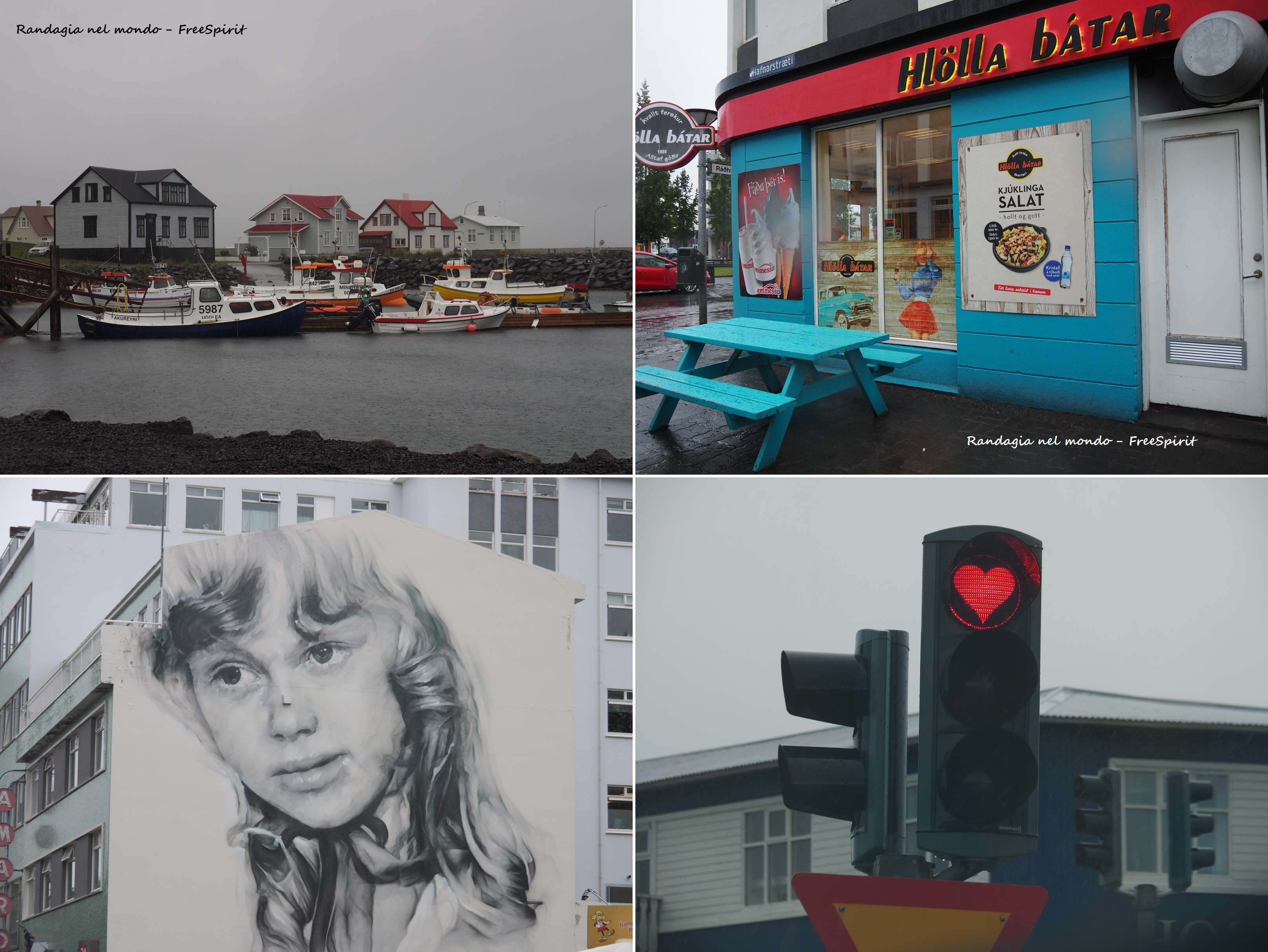
After leaving Akureyri with the usual awful weather, we stop at Holmavik
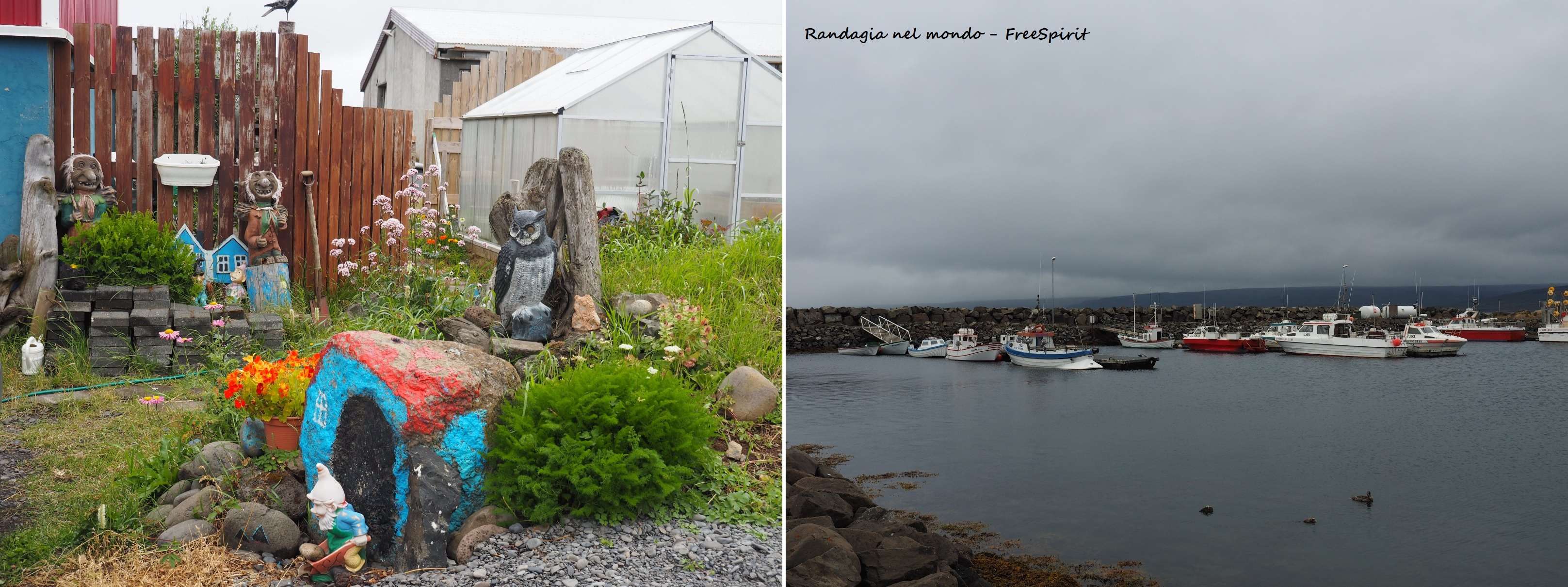
for a visit to the museum of magic and witchcraft, a stop that I would have gladly avoided in good weather if there had been some outdoor place to walk. Admission fee is 1000 ISK. An explanatory booklet is delivered, available in various languages, including Italian. Among rituals, jewels, symbols, papyrus, parchments, chopsticks, the nábrók stand out, a pair of pants made of human skin. Legends tell were they could give richness to the person wearing them. The procedure, according to Lonely Planet, was rather complicated: it was necessary to make an agreement before death with some someone willing to donate his body. Then it was necessary to skin the corpse from the waist down, taking care not to tear it down. The placement of a coin in the scrotum pouch would have led to its magical multiplication. The whole story is such a bullshit that even the inhabitants of XVII century must have found it absurd, to the point that they always beware to try it. What interests me the most are the chronicles of the witchcraft processes. They really left me stunned the futile reasons some unlucky people have been accused of. They were processed at Þingvellir
At Litlibær, after a nice and typical cafè, we spot groups of seals beached on sandbanks offshore. A zoom is needed to photograph them decently. In the parking lot there is an unattended stall with homemade jams for sale, and a small box where you can leave your money. It might seem a curious custom for us Italians, but for me it is nothing new, the same practice is in use in Australia, and probably in other civilized countries.
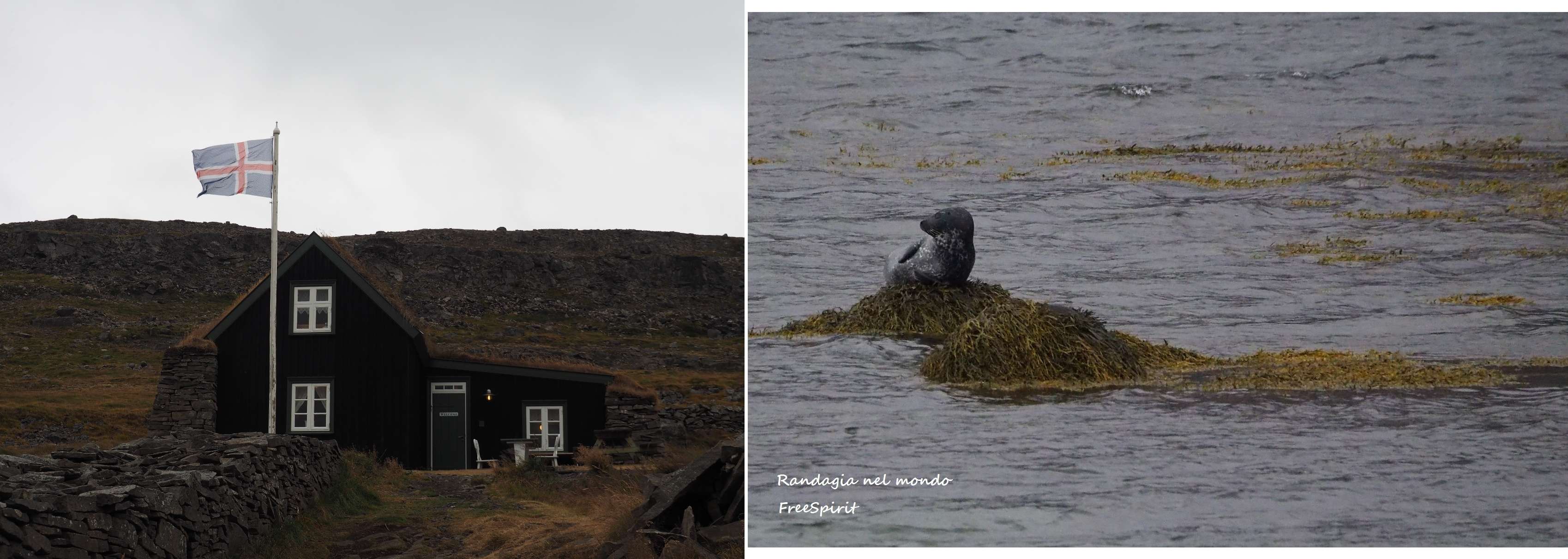
We reach Laugarbakki under an inclement sky, we cannot see anything of the beauty of the surrounding fjord. I can’t even get out of the car to visit the small church of Viđimýrarkirkja (entrance 1000 ISK), one of the few left with a turf roof
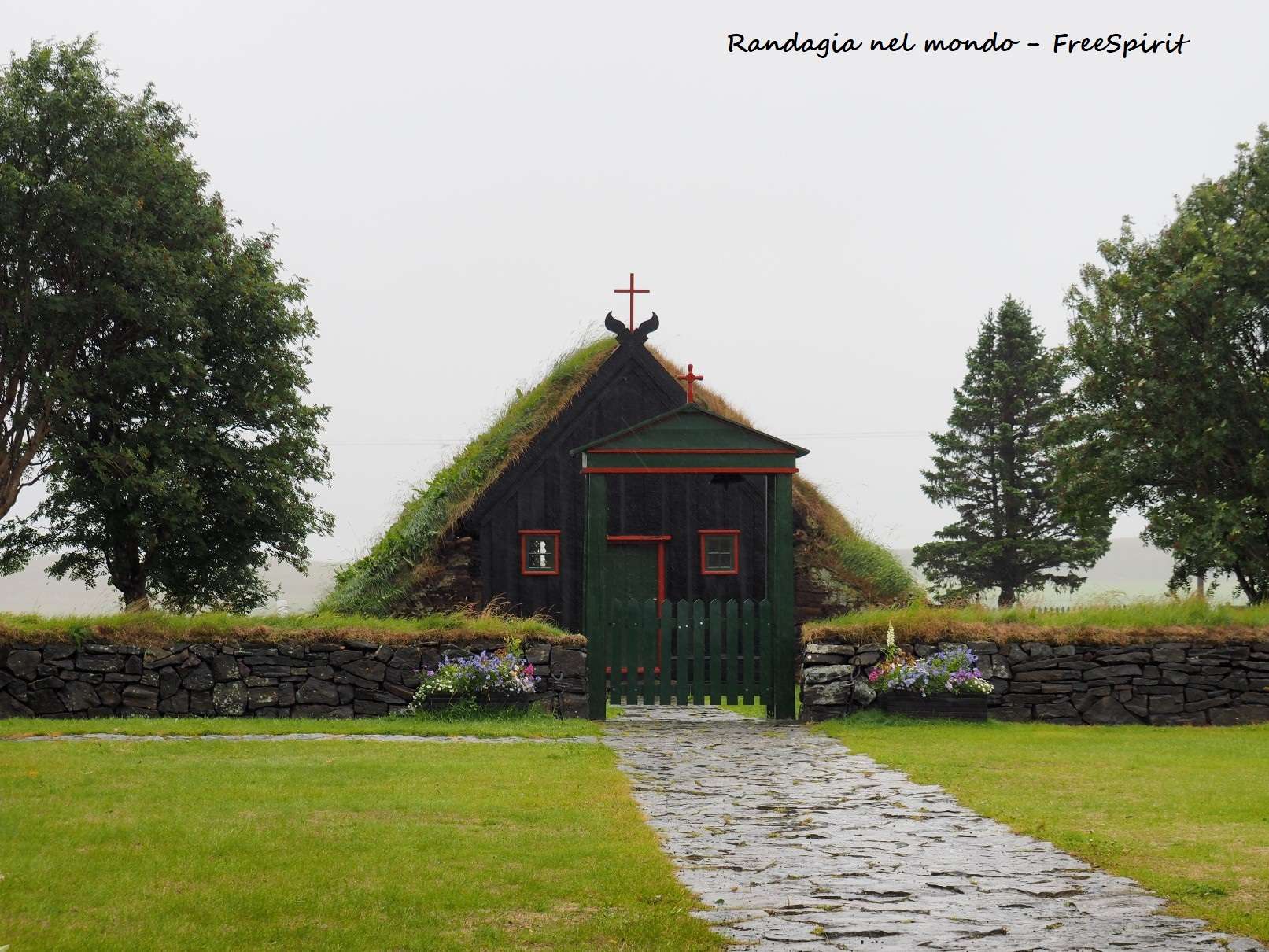
The Langafit guesthouse, booked by contacting the owner via Facebook, (double room 56 Eu), deserves a moment of glory on the blog. Looking at it from the outside, one would never guess it is a guesthouse, as it is located at a petrol station, in whose shop the owner sells everything from sweaters to original souvenirs. On the back, however, 4 very nice rooms, with kitchen and small shared bathroom. From the kitchen a door communicates directly with the shop. There is even a campsite. I understood it because during the evening some people came to the kitchen asking for info about it after seeing the sign at the petrol station. In practice, in front of our rooms, there is a lawn where people can stop with tents and campers, and some common bathrooms are available.
